Wooden flooring in the garden: application options, construction construction, tricks of assemblies, used types of wood, care for garden parquet
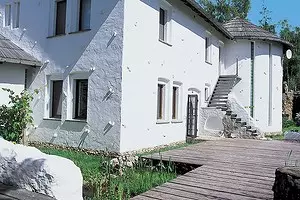
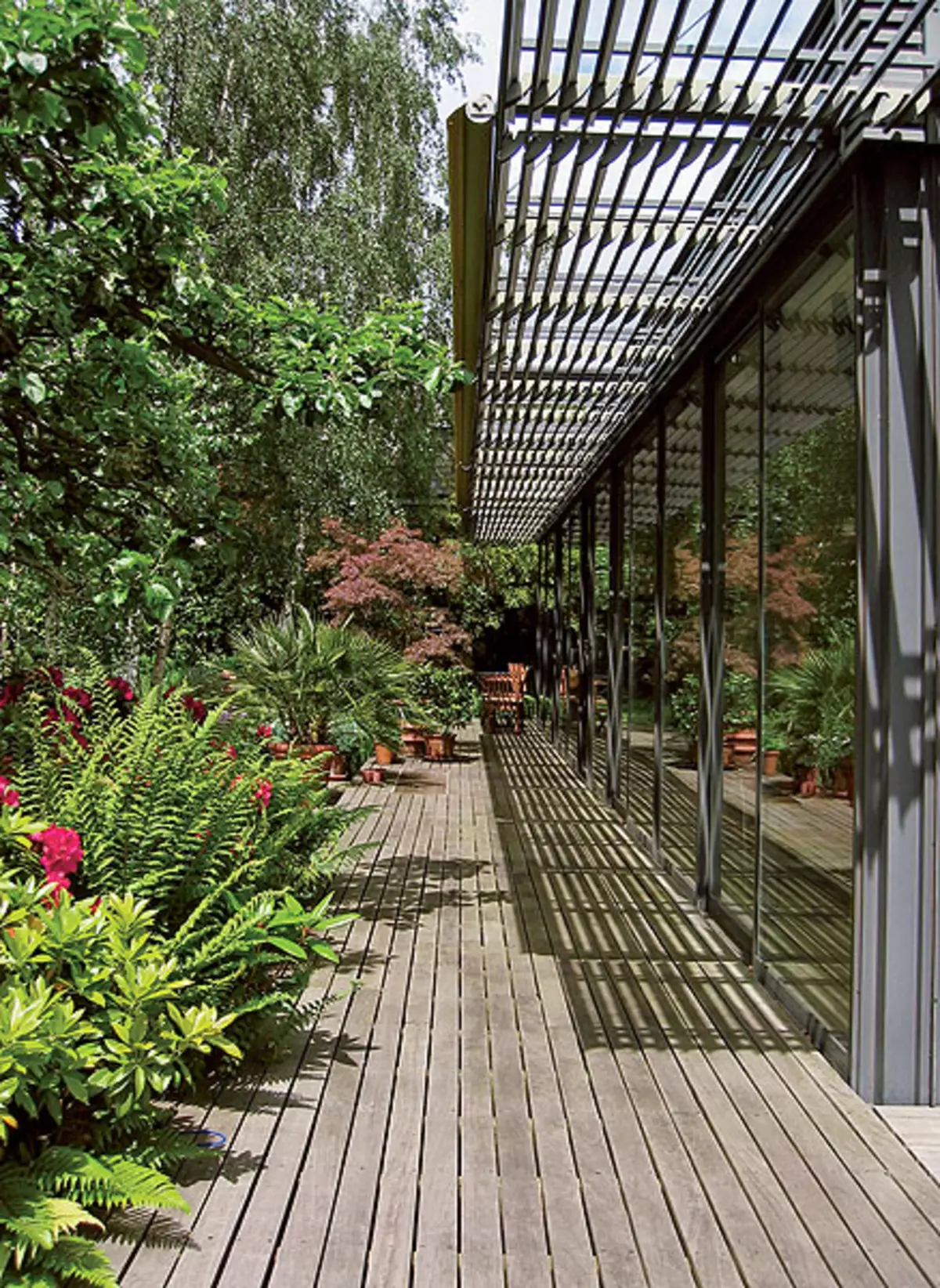
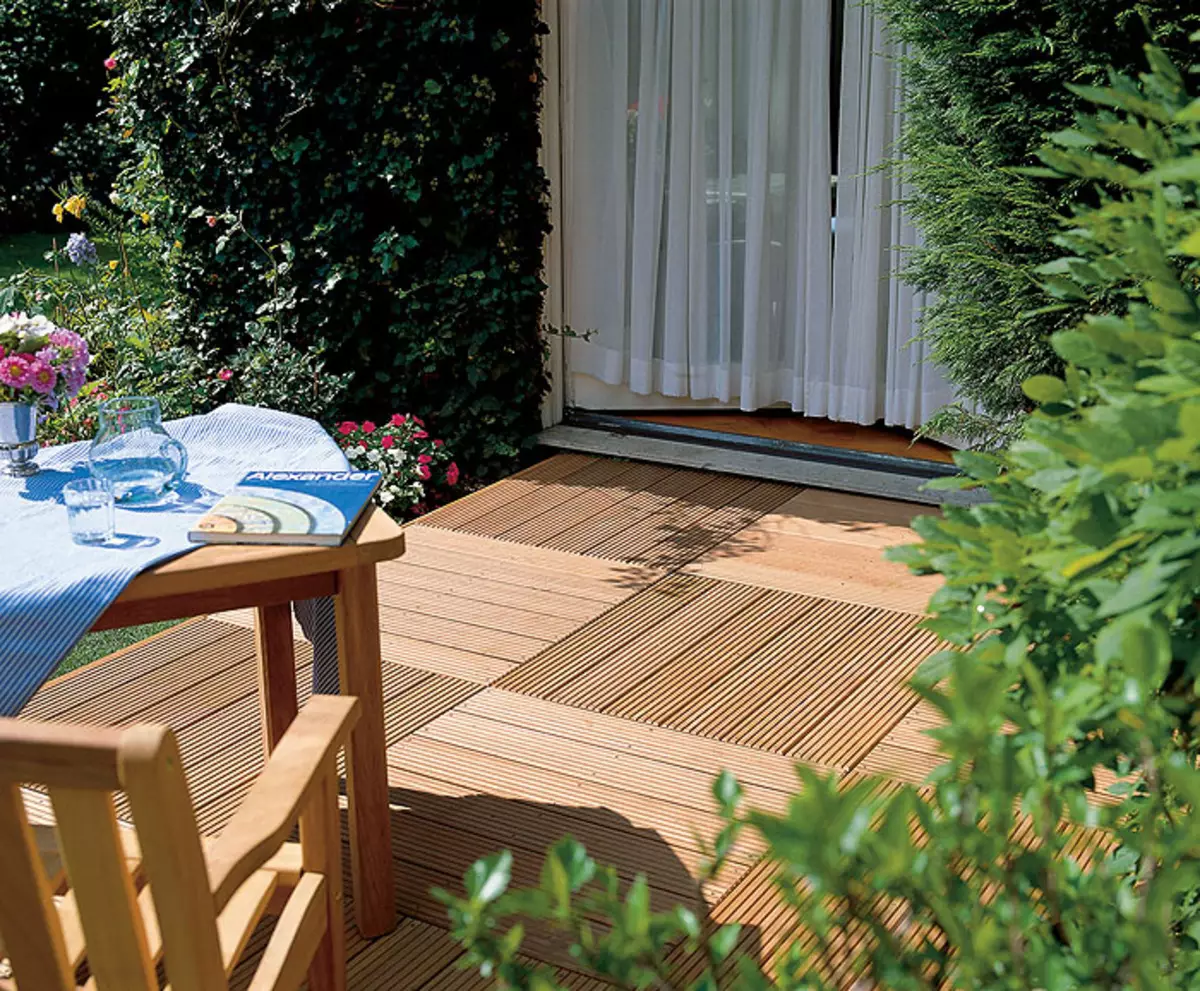
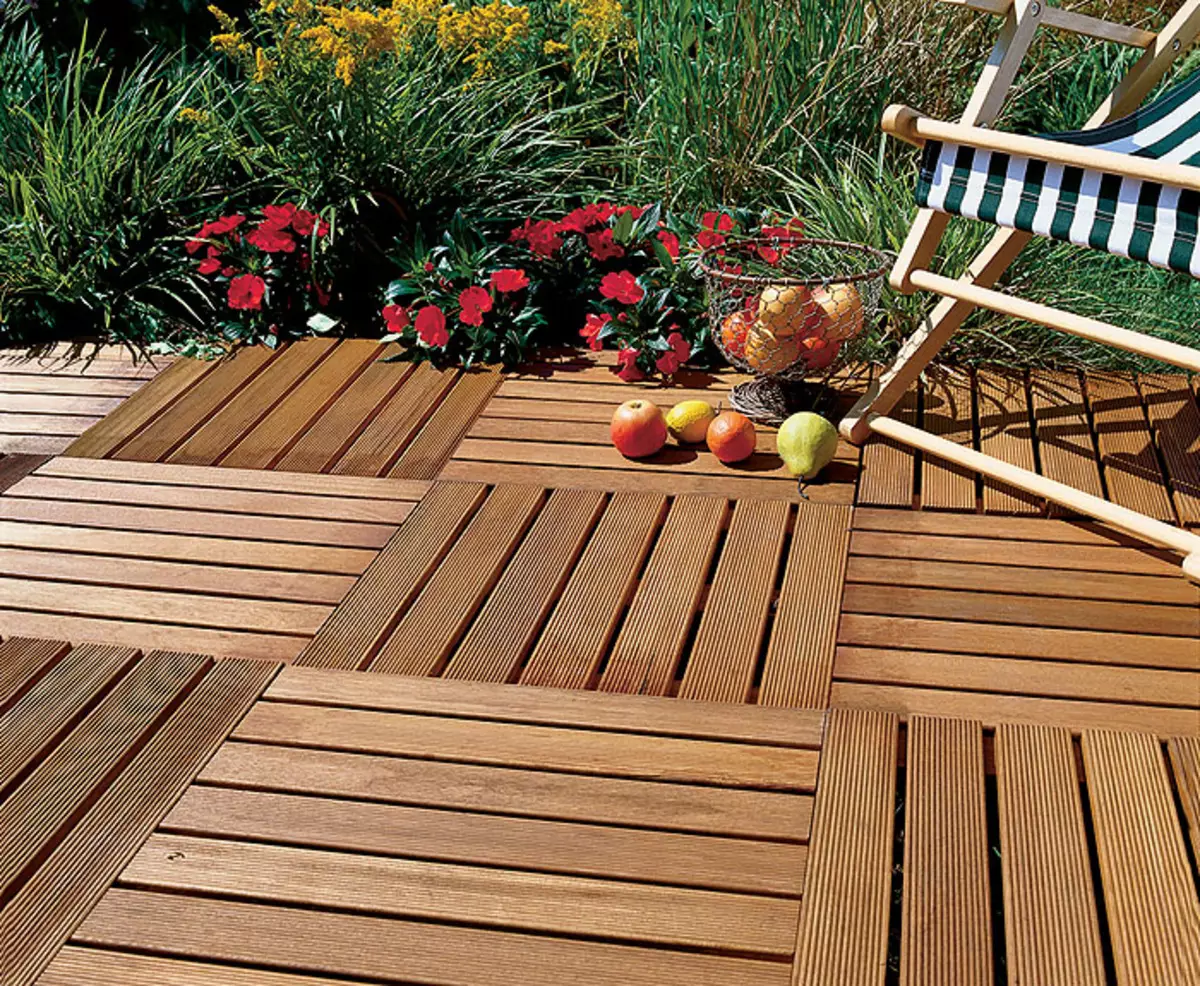
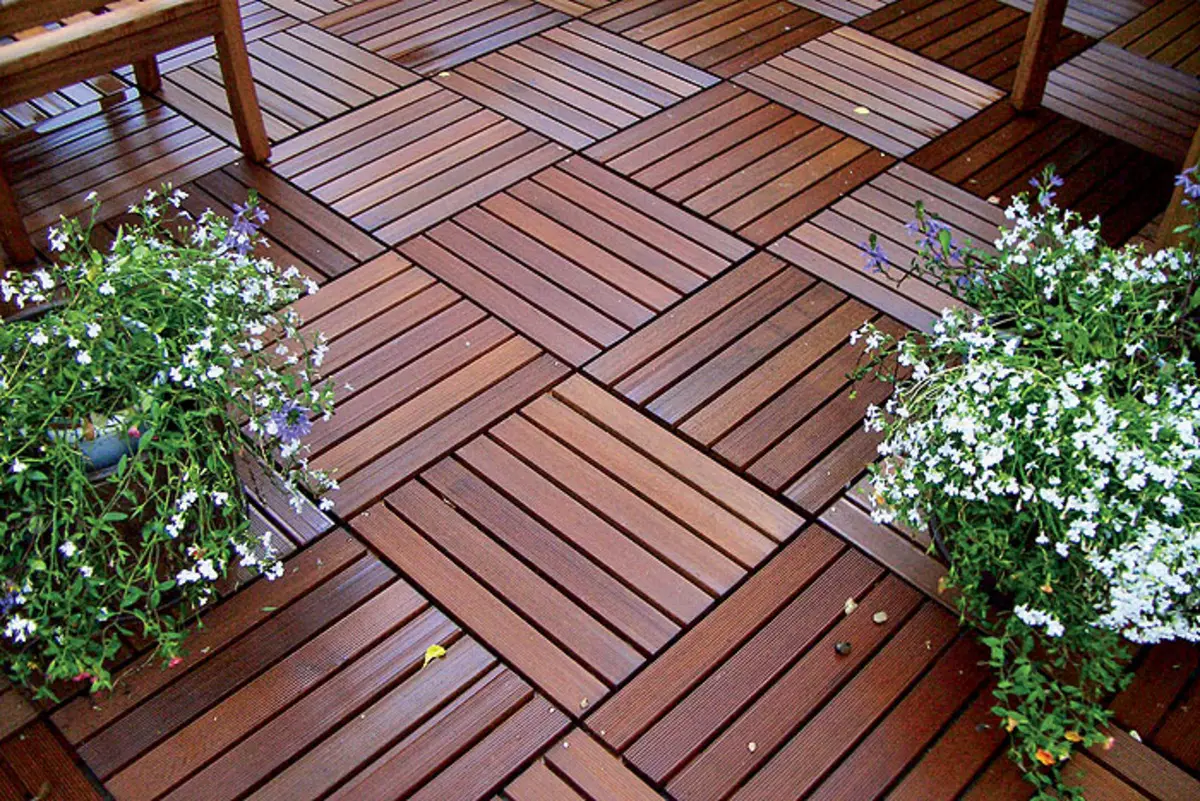
Garden parquet in appearance is very similar to home: the same modules scored from planks, the same division on cells and alternation of directions. And this has a special comfort, the unique charm who give green "walls" from surrounding shrubs and trees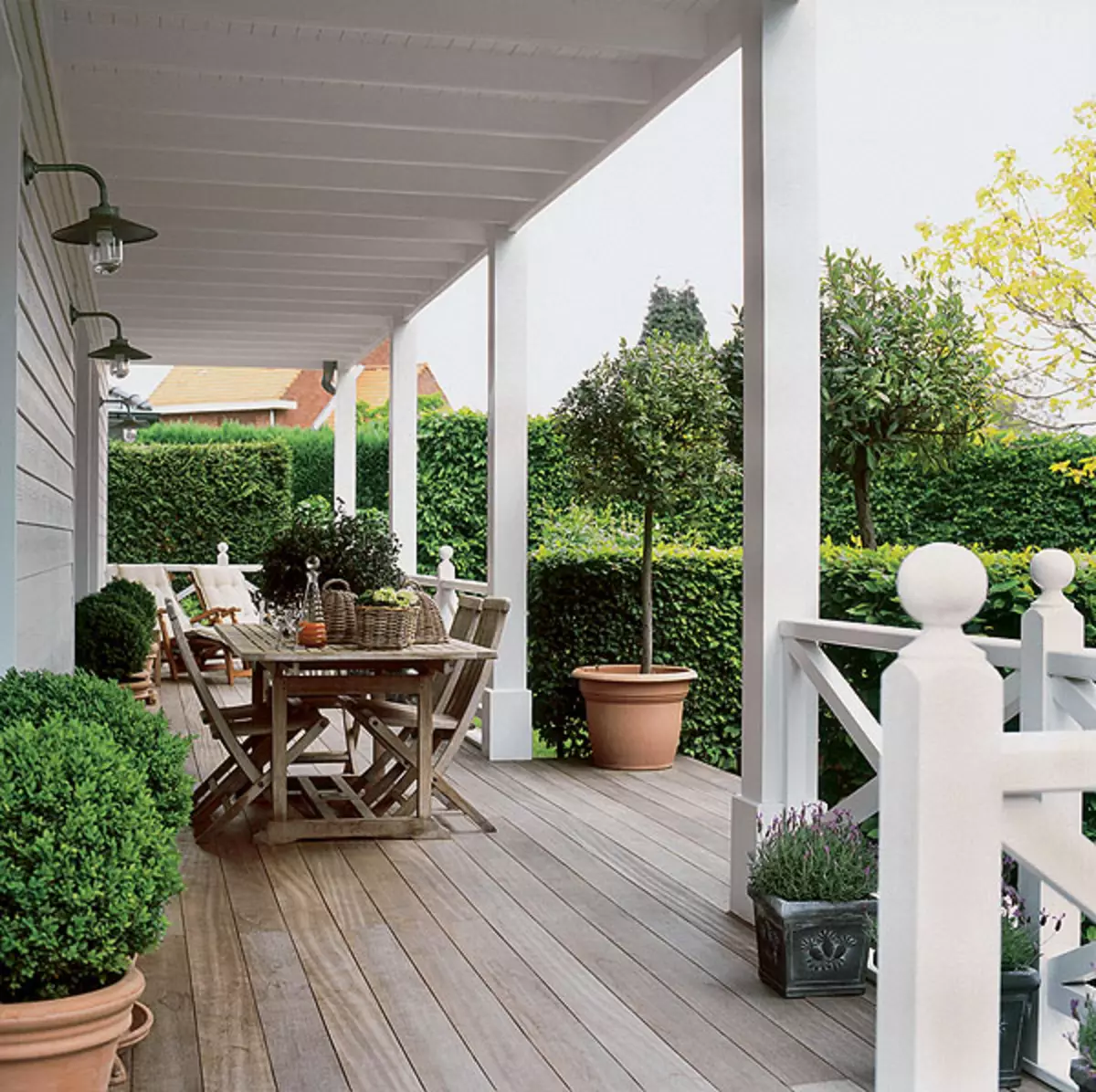
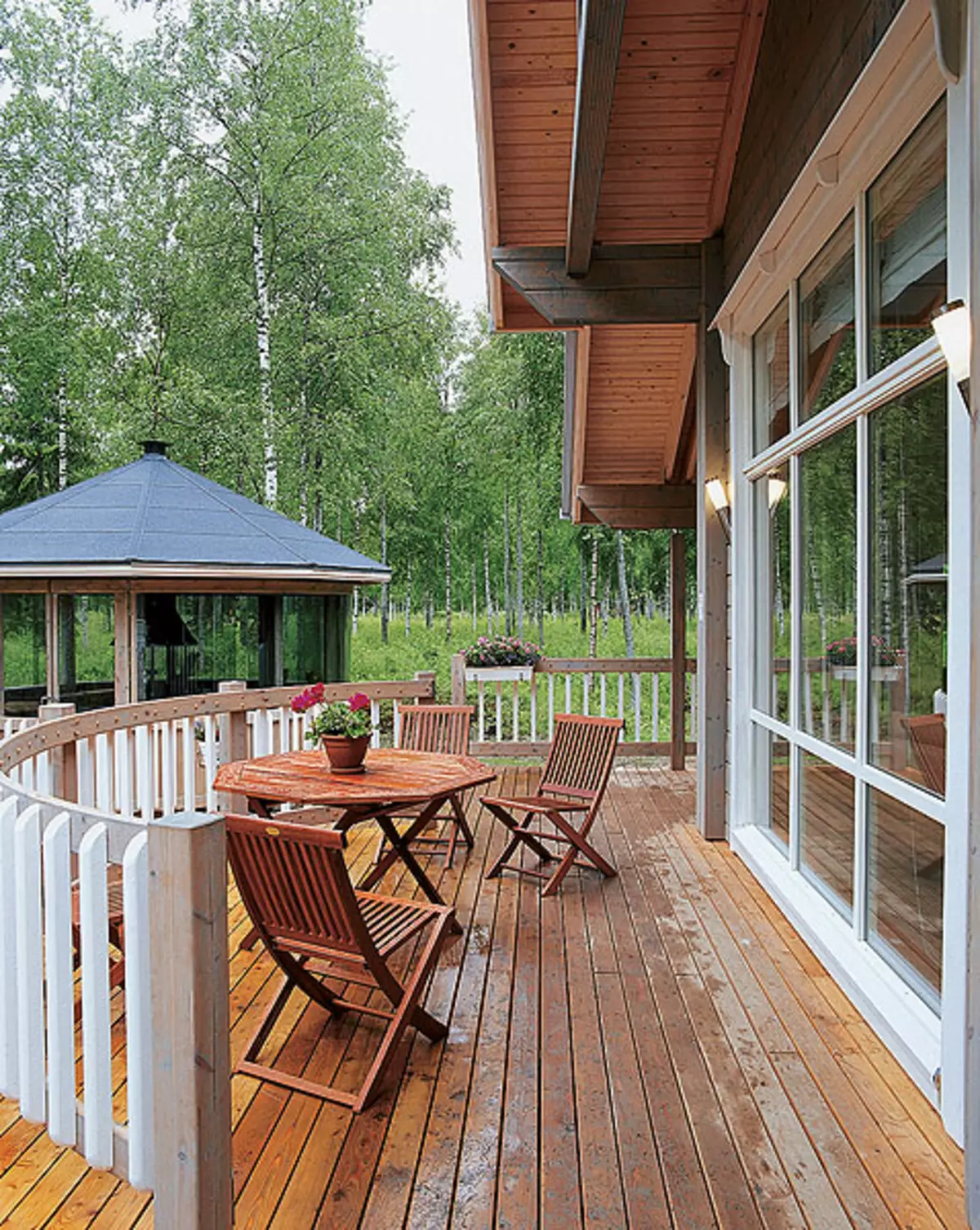
Photo K. Manko
Any, and above all extensive areas, the flooring should have a bias in 2-3o to ensure the flow of rainwater. If the terrace is adjacent to the house, the slope will be from its walls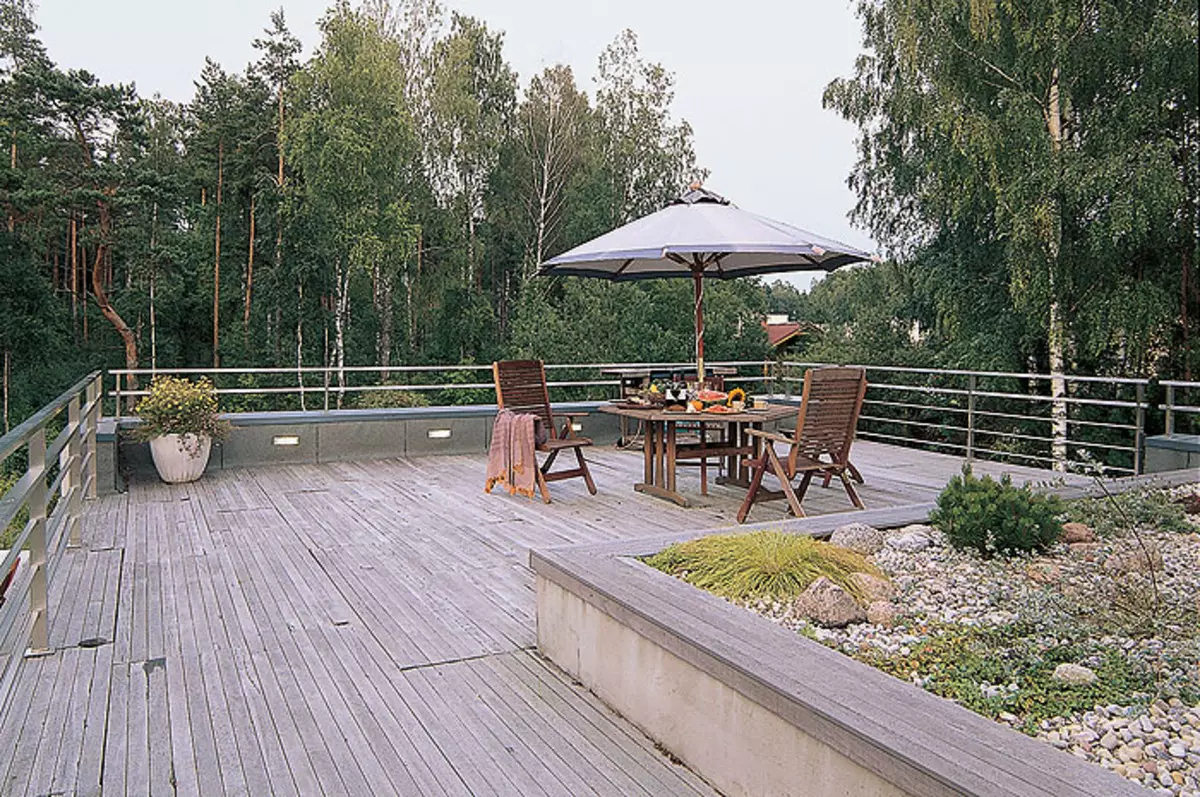
Designer V. Evokimova
Photo K. Manko, E.Kulibaba
Operated roofs are becoming increasingly widespread. Gardens are broken on them, arrange platforms for recreation. Wooden surfaces, by the way, help relax and calm down. However, do not forget about security and be sure to install the railing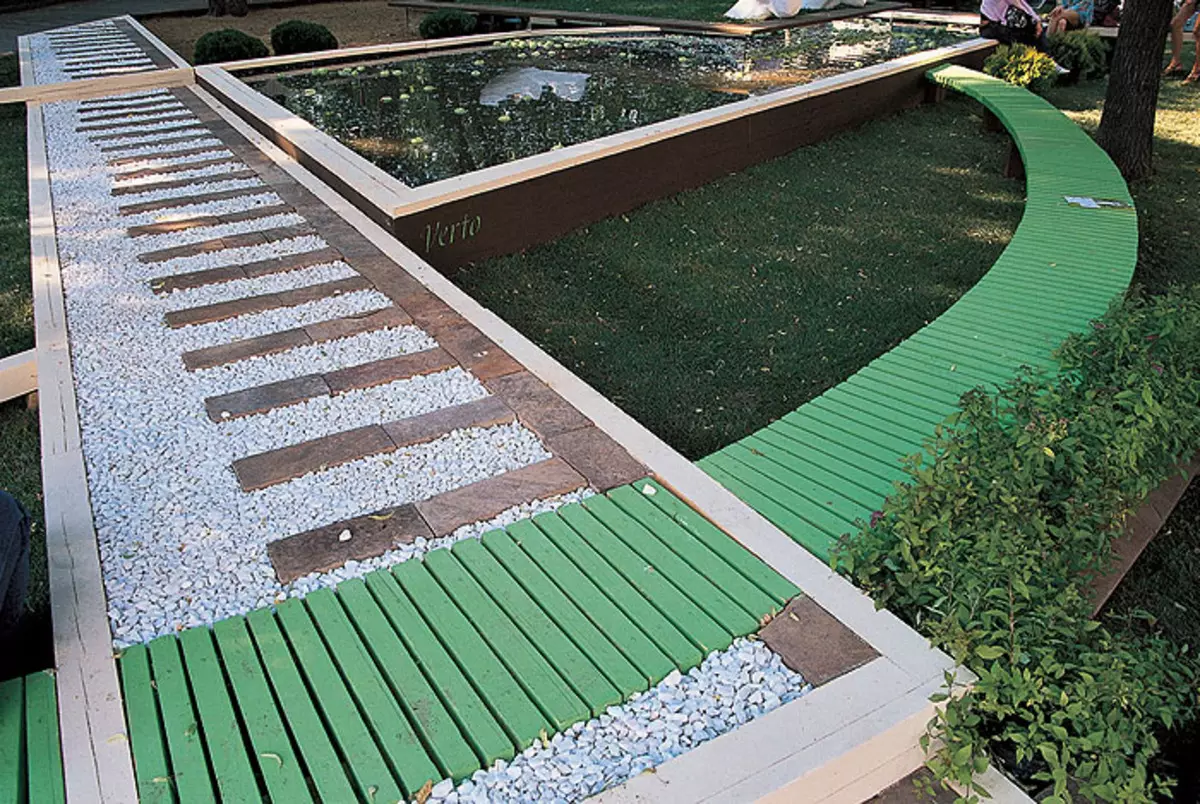
Tree is not only tinted in various shades of brown, but sometimes stained - for example, in a juicy light color, which brings the feeling of freshness and does not contradict the green surrounding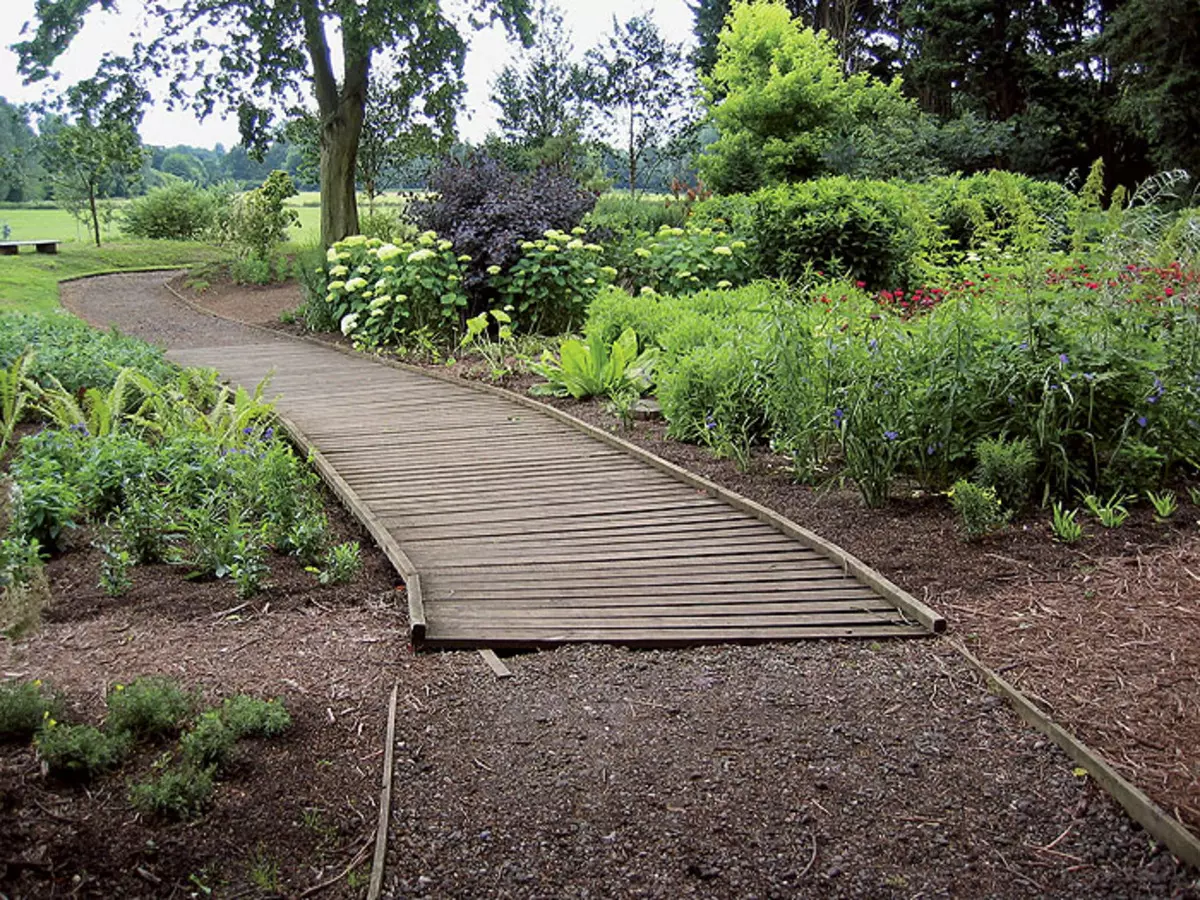
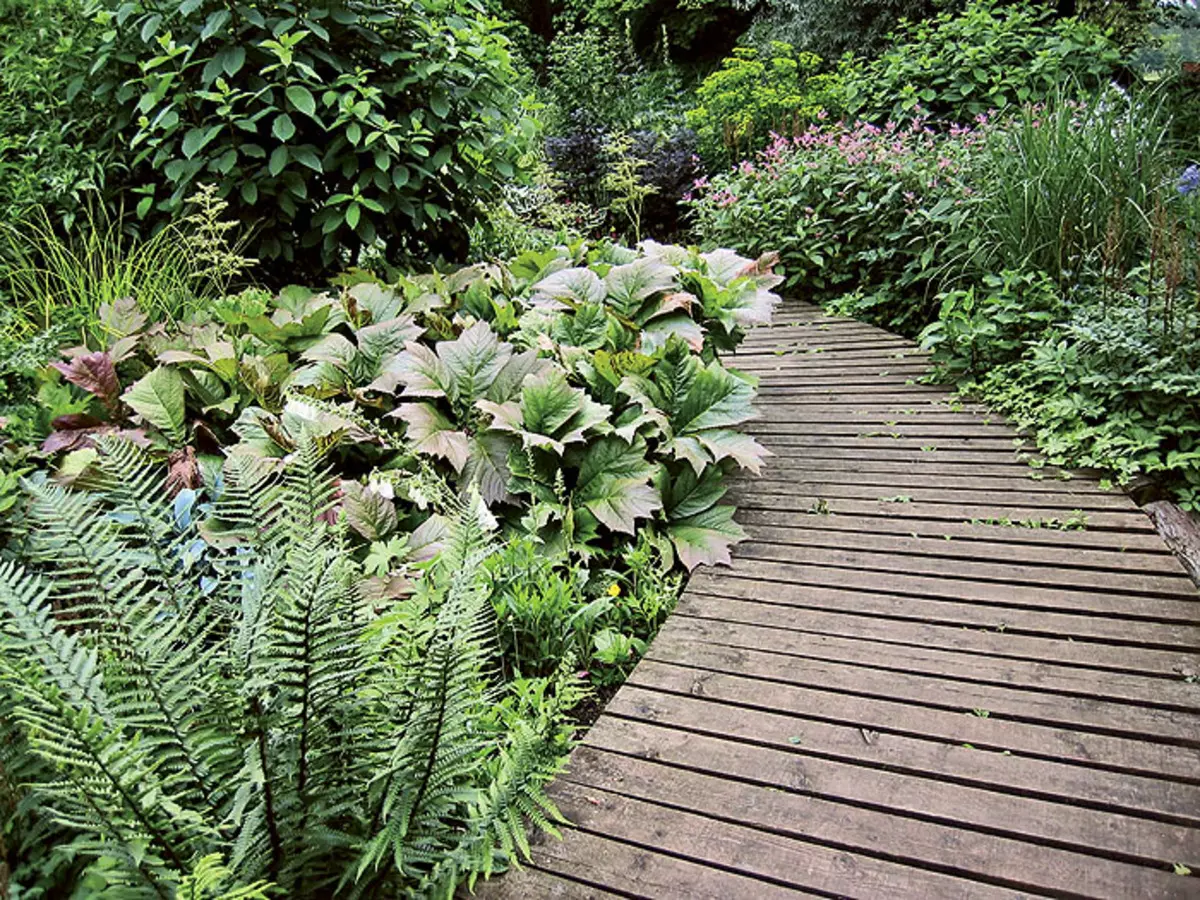
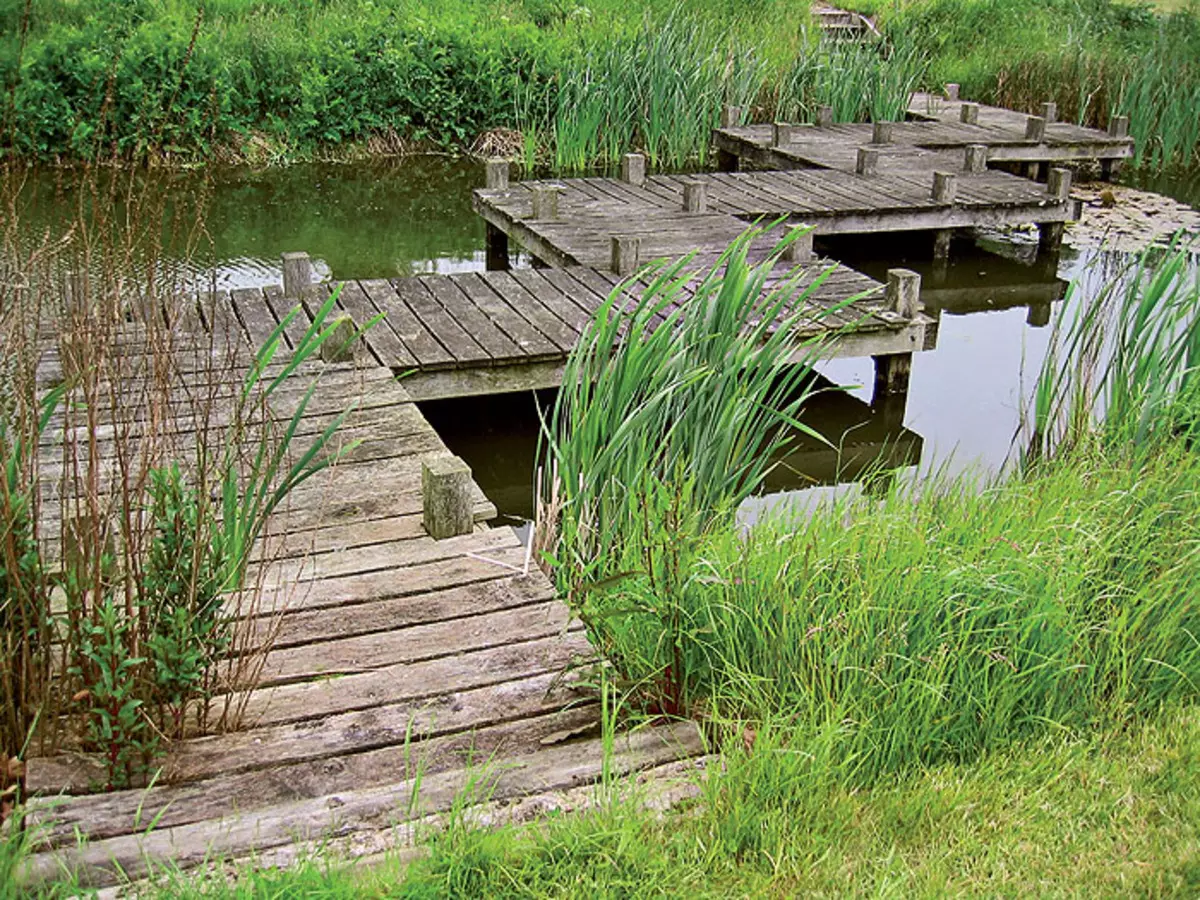
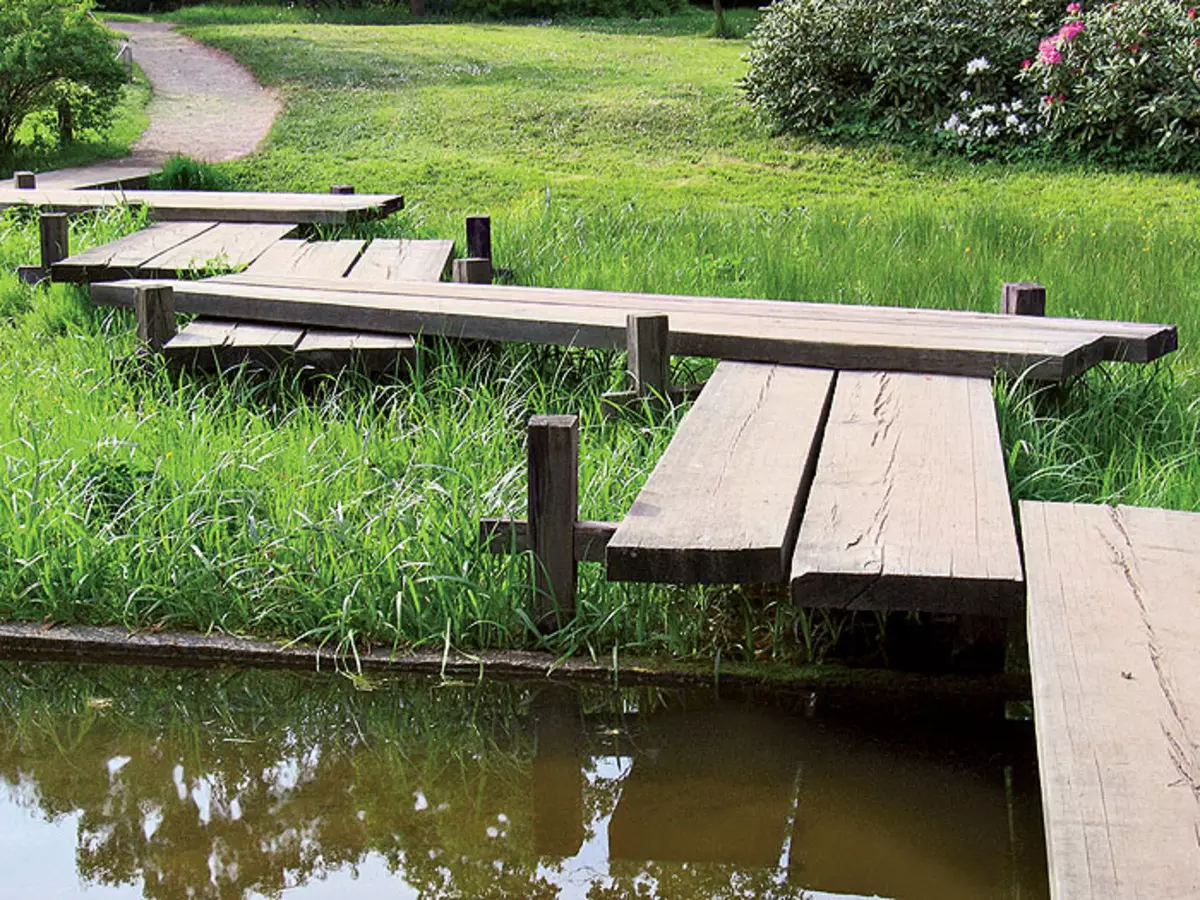
Bridges built by Zigzag, prolong the travel time over the water. When you turn into one direction, then the other, natural paintings have time to change several times before our eyes. Similar structures are characteristic primarily for landscapes in oriental style.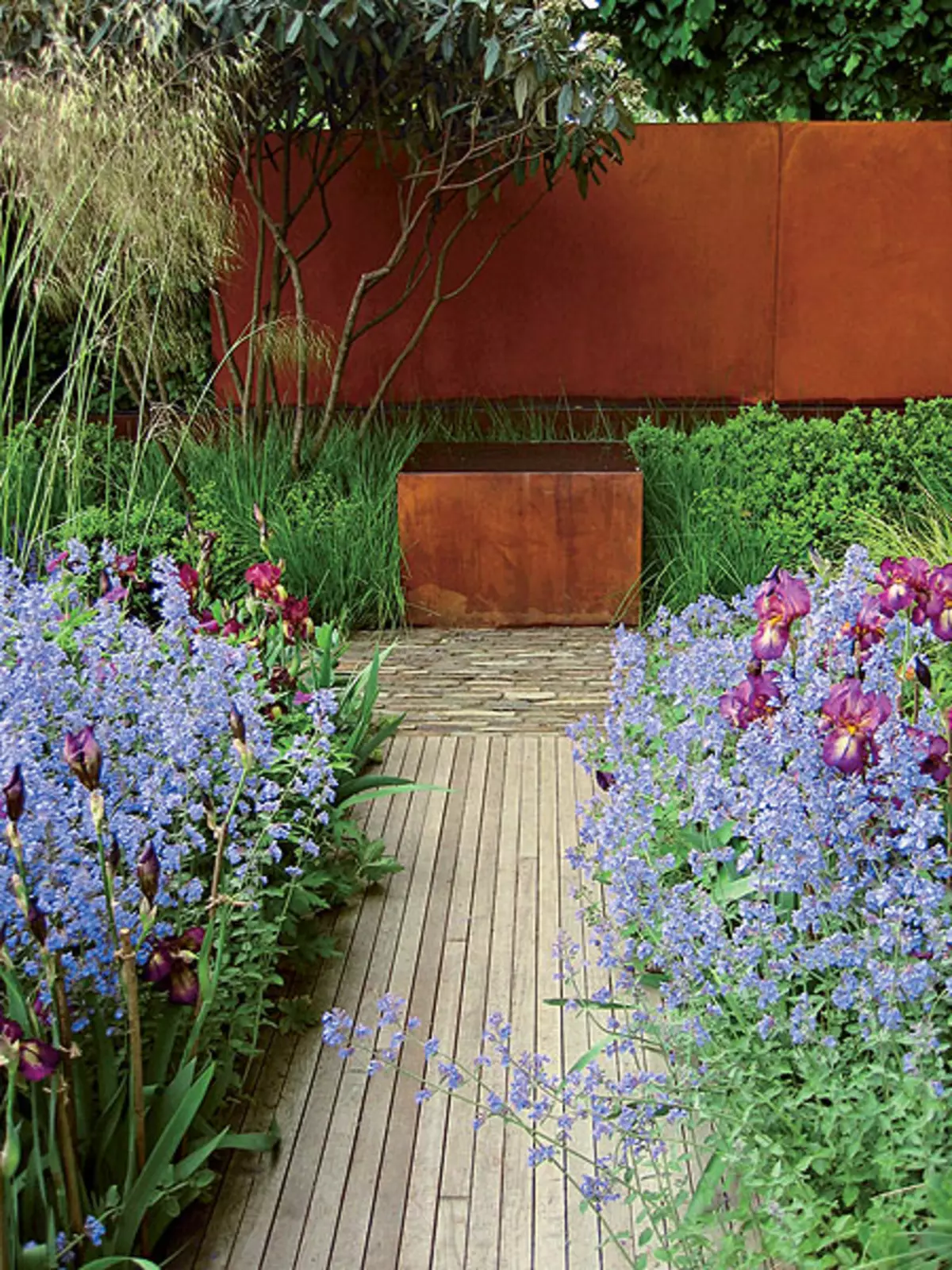
Woodings made of wood structures multifunctional. This is a garden track, and a playground near the pool or on the operated roof, and the terrace, and the patio, and the paws above the pond. In size they may be different. All these designs are characterized by the fact that the tree, firstly, is constantly influenced by atmospheric factors (the impact of rain, snow, sunlight), and secondly, is in close proximity to the soil. At its nature, this material is prone to rotting, the main task when laying the flooring is prevented or at least slow down the natural processes of aging and the destruction of wood.
Fundamental approachBefore laying the flooring, it is necessary to prepare the basis for it - the foundation. To do this, first align the platform on which they plan to build a wooden structure. The foundation may become concrete slabs laid at a certain distance from each other. Fundamentally other options are plastic screws installed on concrete (in such a situation, concrete serves as an intermediate base), gravel (thickness - about 150-200mm) or even a sandy platform. These devices allow you to compensate for all area irregularities due to the fact that you can adjust the height of the supports and the angle of inclination located on top of the disks. Thus, Buzon (Belgium) manufactures several supports of the supports: the range of their height is 17-620mm, the angle of inclination of the disk-0-5%. On 1m2, there are five such supports on average.
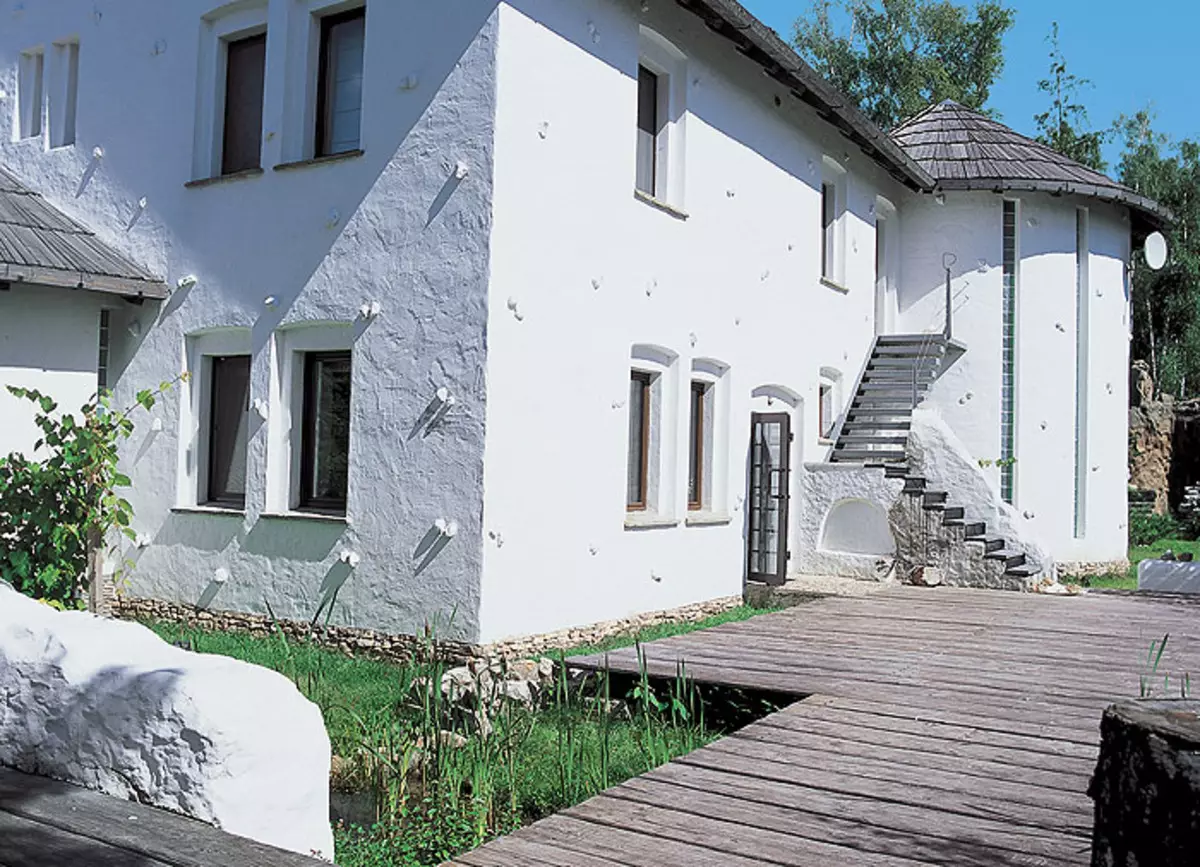
| 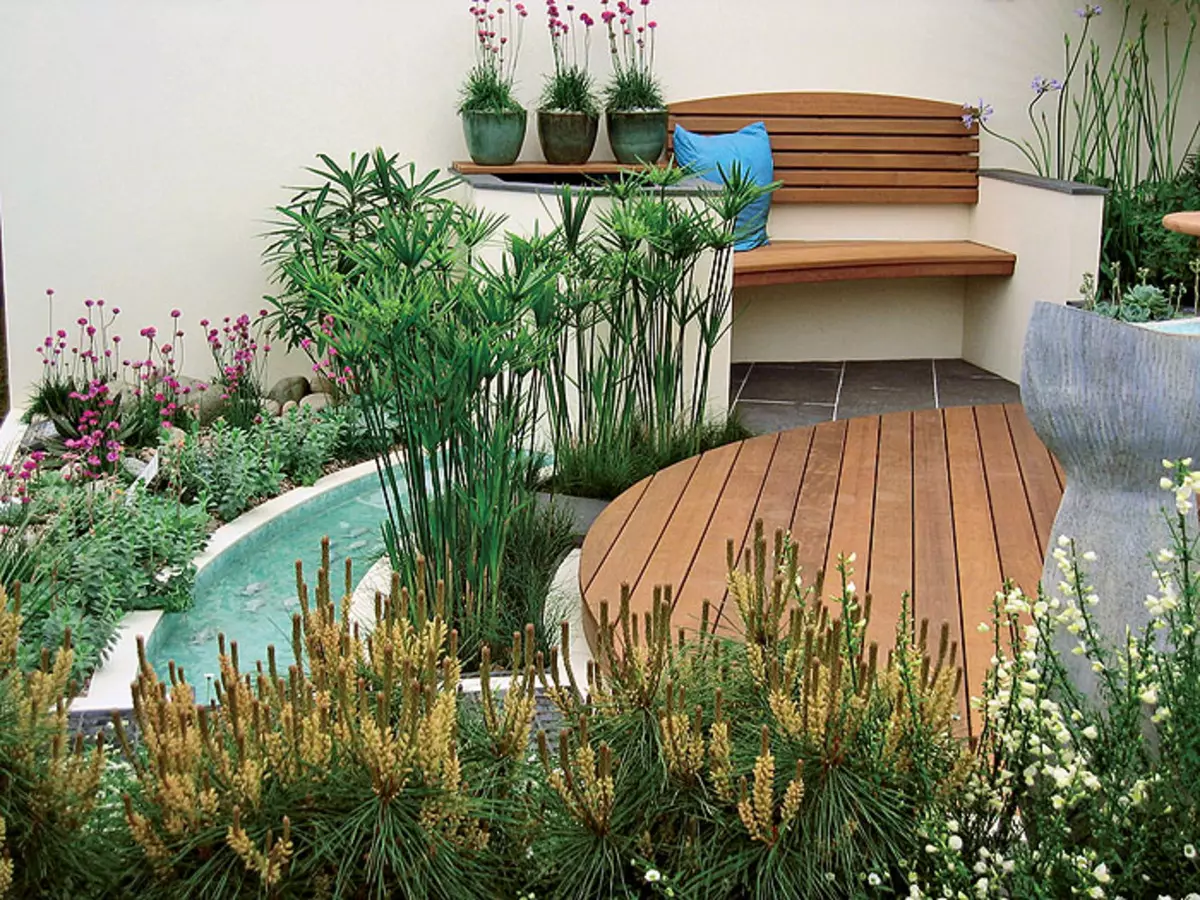
| 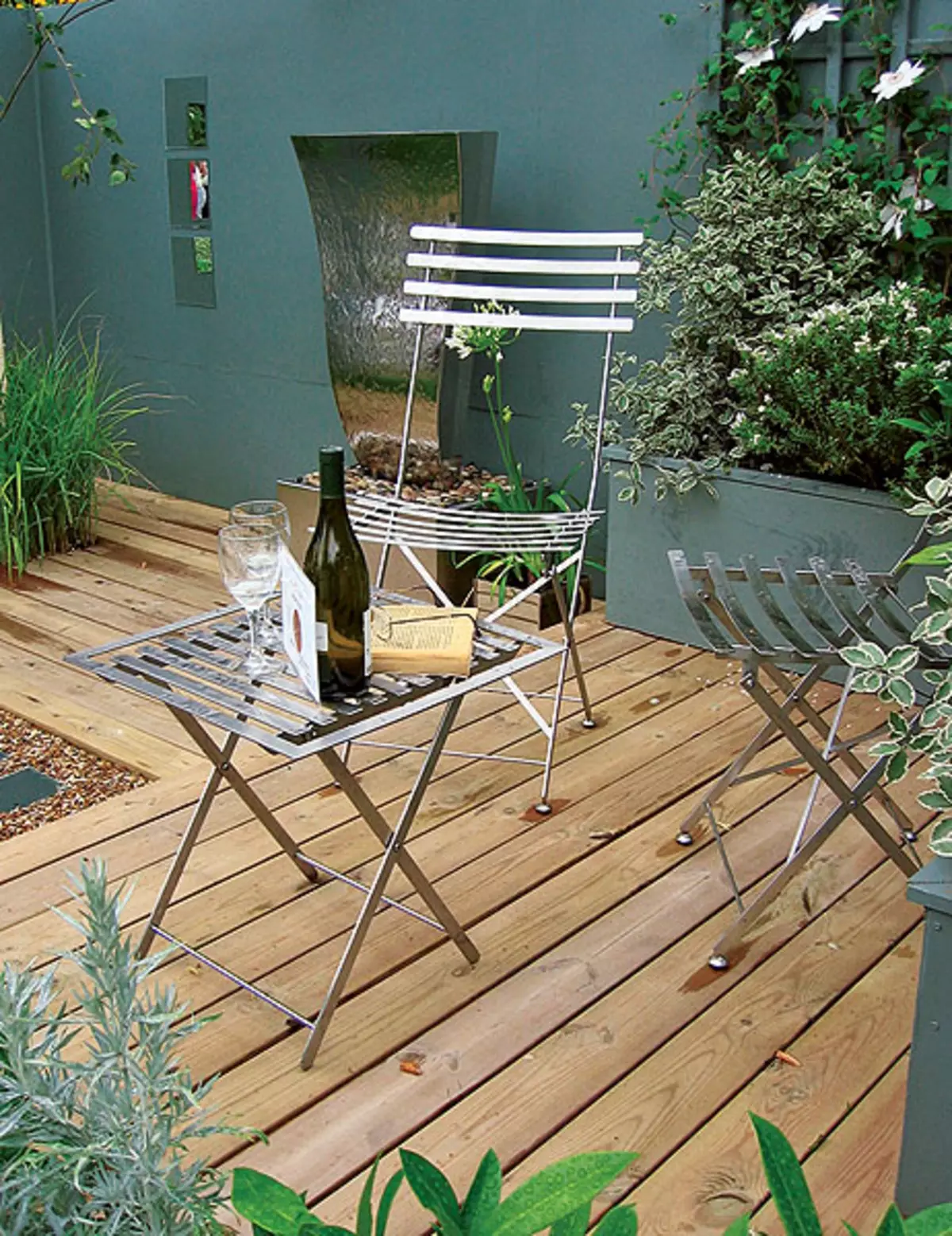
|
The form of flooring dictate surrounding architecture and landscape. It can be any: a square, rectangular, round or more complex, composed of several figures.
Then antiseptic wooden lags are fixed to concrete slabs or screw supports (for example, from glued larch) or metal profiles. Depending on the size of the lagows, the lags are placed at a distance of 400-600mm from each other. The cross section of the lag may be different - 5050, 7045, 7550mm. So that the wood is better ventured, the lags make corrugated.
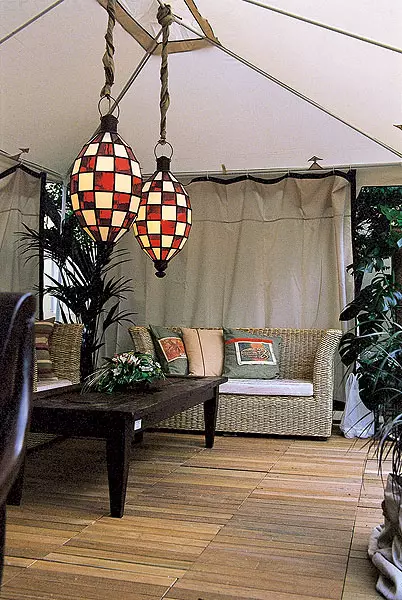
On the lags are a steering board. There are two main ways to fasten them. When stainless steel screws (minimum diameter - 5mm) are used, and the caps should be pulled below the surface of the board and, if desired, close the plugs. When the method is closed, the following fastener system is used: so-called clips are inserted into special grooves in boards and lags, which fasten them firmly and are not visible on the surface of the flooring. The boards are mounted with a gap of 5-8mm relative to each other to ensure the natural circulation of air and the flow of water after the rain, and also allow the wood to "move" freely when changing the temperature and humidity modes.
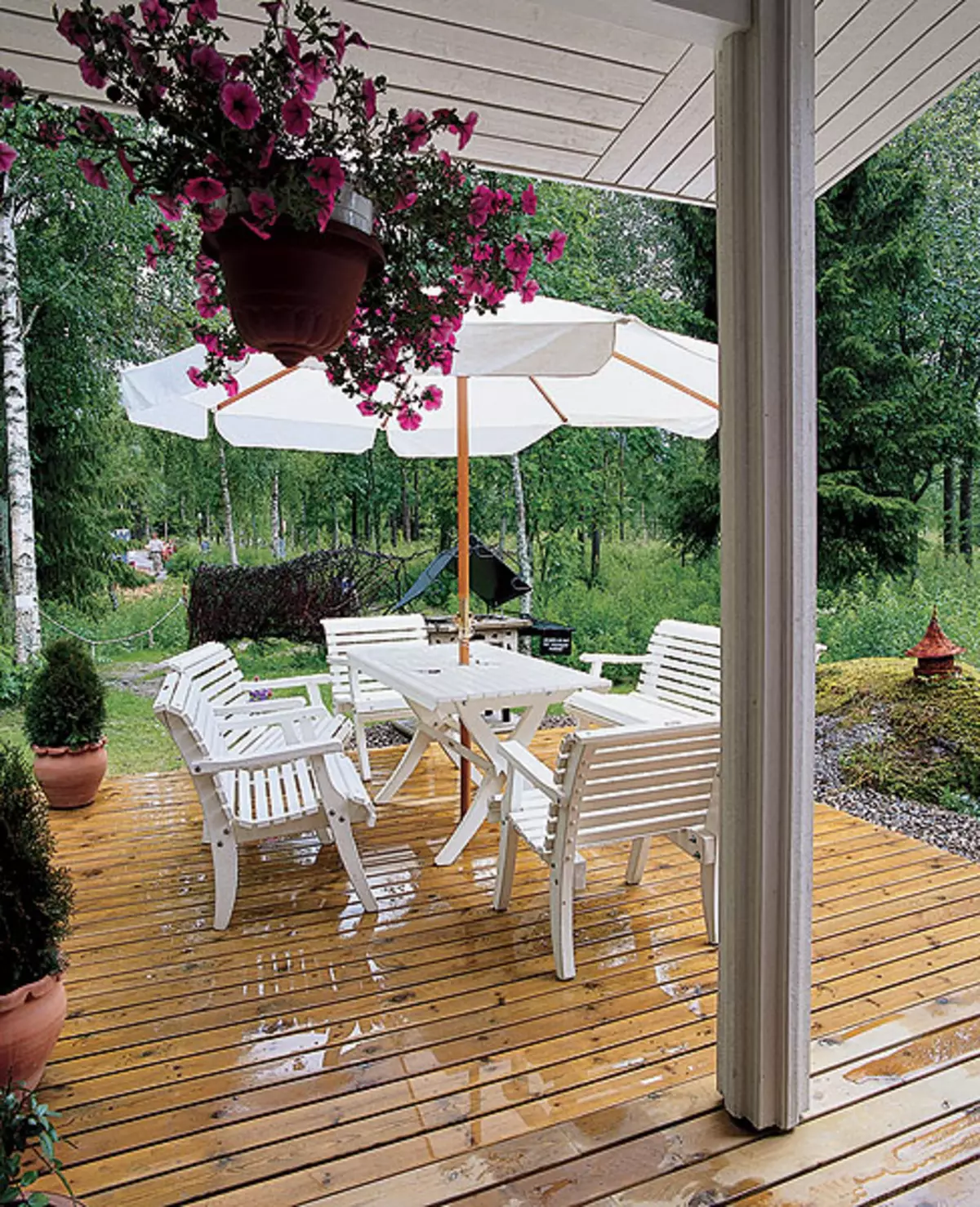
Photo K. Manko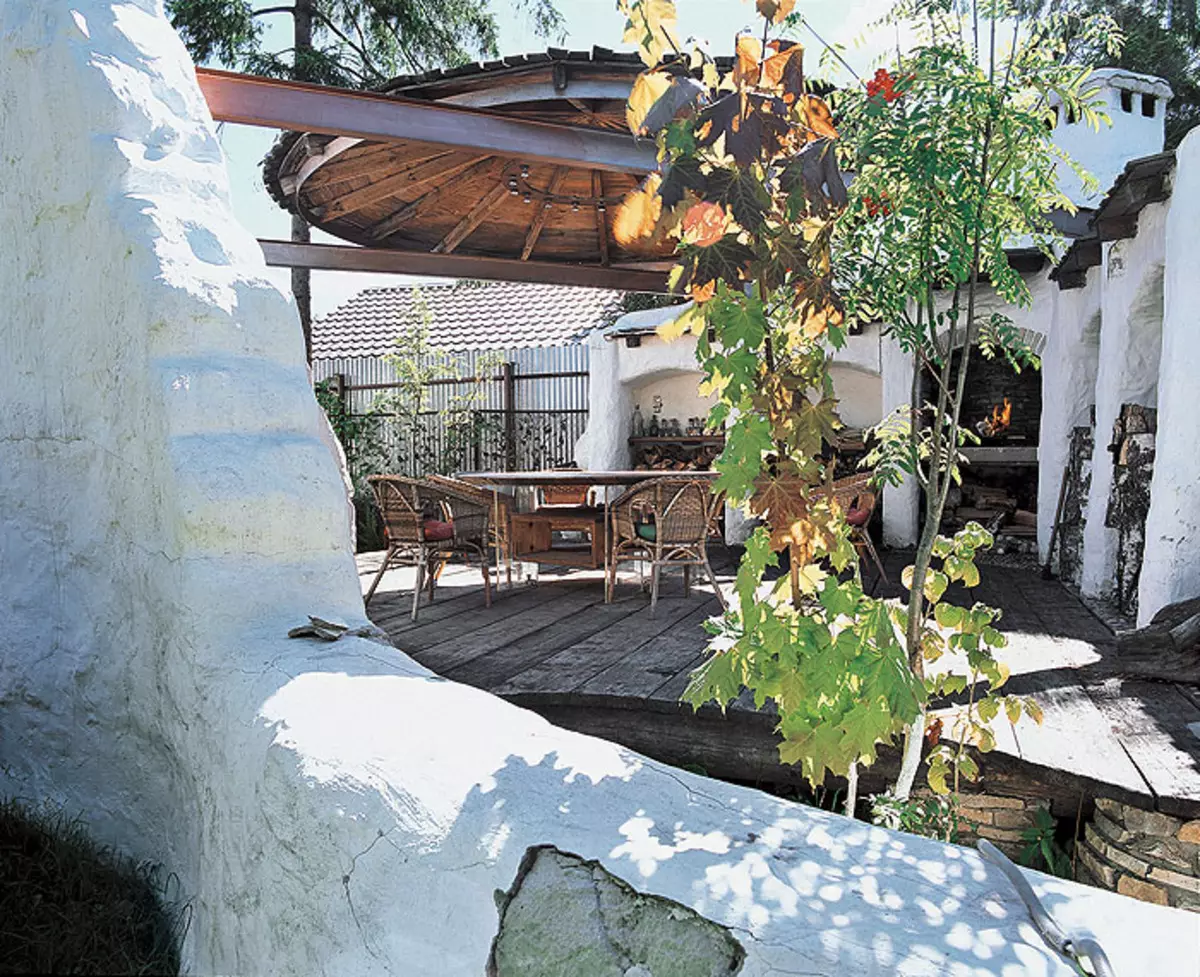
Photo by K. Manko Open terrace - a cozy place for gatherings and tea drinking in nature. To protect yourself from sunlight and rain, equip it with the roof. Furniture choose to your taste, wooden, woven from rattan or plastic.
The boards are laid so that the joints between them (if any) accounted for lags. Shakes in neighboring series need to be "tied" to different lags. The ranks located on the 40-50cm above the ground level, it is better to provide handrails or railings.
So that the flooring does not slip, the surface of the boards must be corrugated (the rifrance is large or small). To ensure water drain, wooden platforms always have a small bias-2-3. On the sides of the flooring decorated with boards, border of stones or bricks or plants
Tree wood rosThere are several types of wood, which are used for the construction of flooring outdoors. Most often these are durable rocks of high hardness and density (most of the necrotes growing mainly in South America and Southeast Asia) or heat-treated wood. On the Russian market, the material is ready ready for styling, in the form of terrace, or deck (eng. Decking), boards. The name is explained by the fact that the same board is used for the construction of berths, yacht decks (this is, by the way, the indicator of its water resistance and reliability).
Campfire
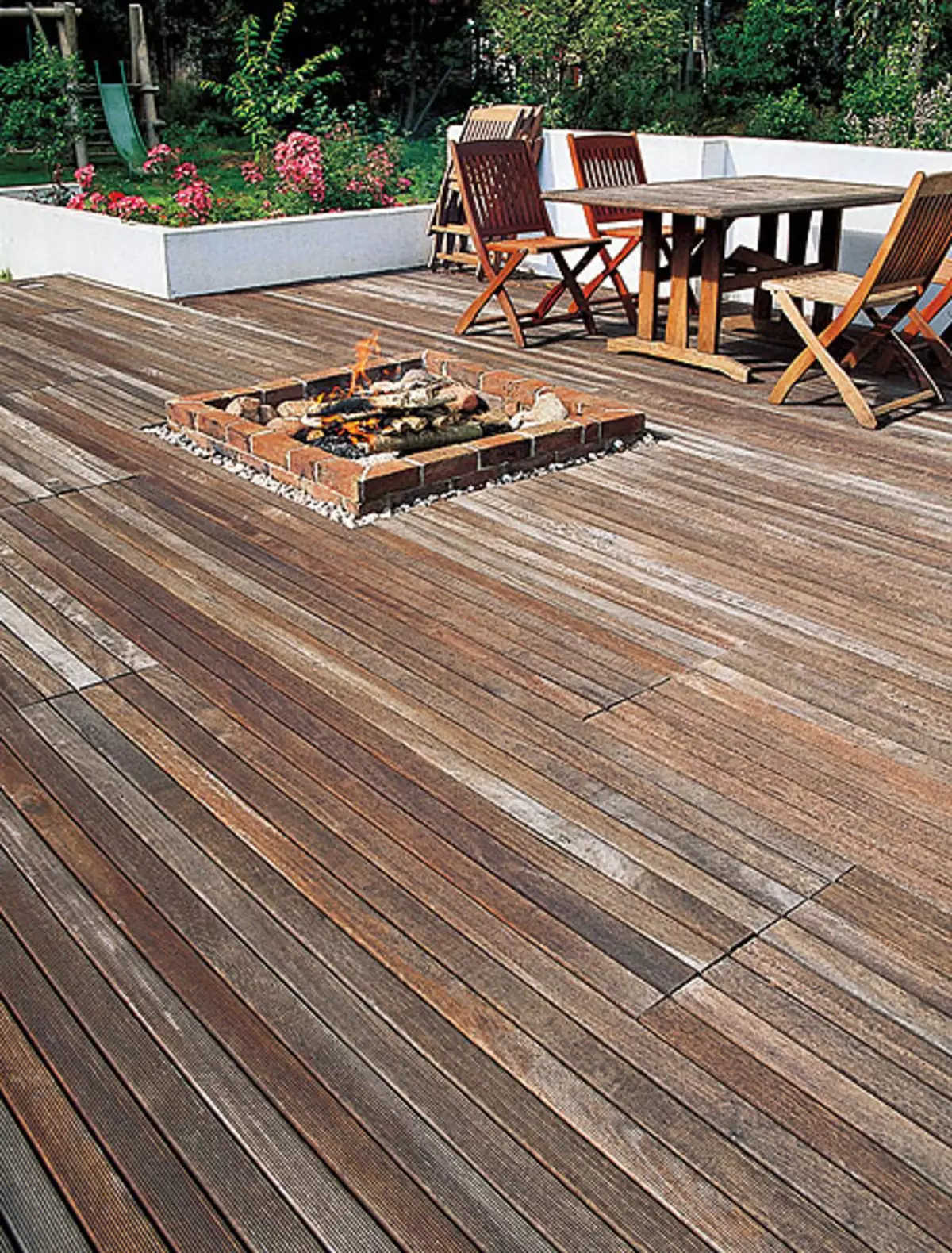
Of the rocks growing in Russian conditions, the Siberian larch is used for the construction of the flooring. If the wood of this tree is immersed in water, it will not rot and eventually will become only stronger. Only on the sunny rays of the playgrounds of the larch board sometimes "be shed". The terraced board is produced by the Forest World, Real Wood (both- Russia). The cost of larching is about 1000-1500 rubles. For 1m2. Pine is cheaper, but less durable and decorative. The boards from the Siberian larch are recommended before laying to impregnate from all sides with a tinting veil or paint, and then oil. From pine, first with antiseptics, then with a tinting composition and only after that, butter.
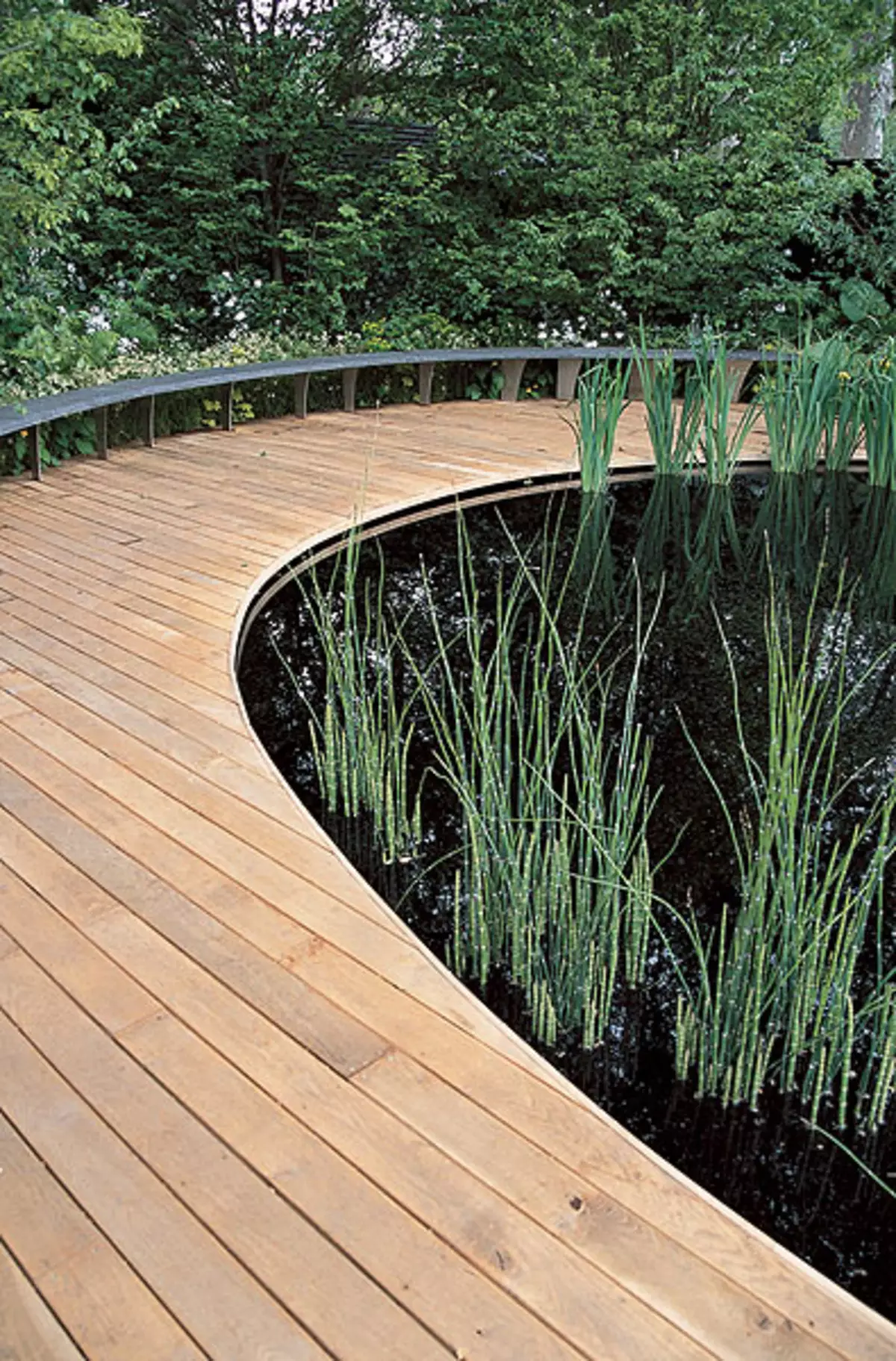
| 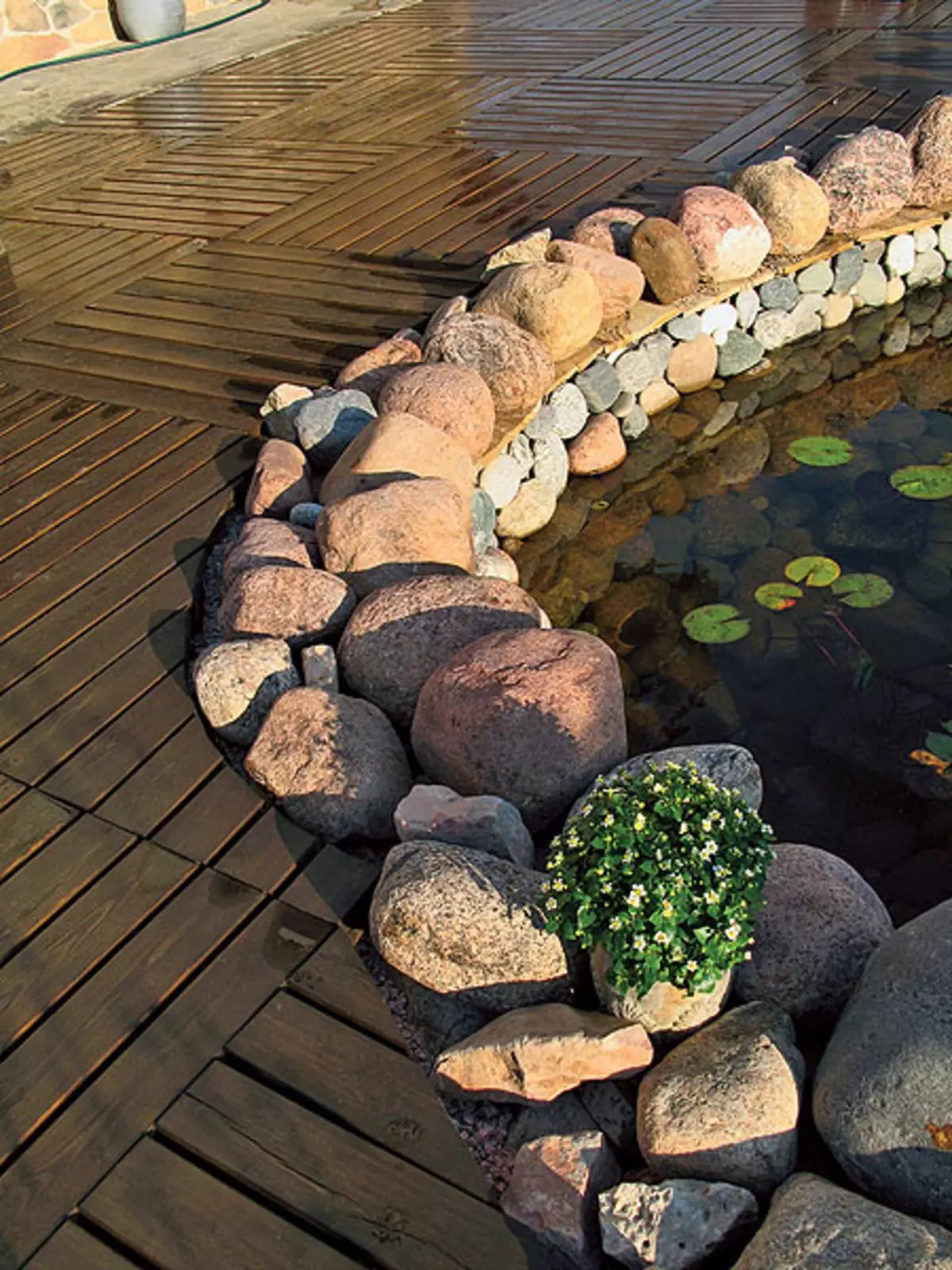
| 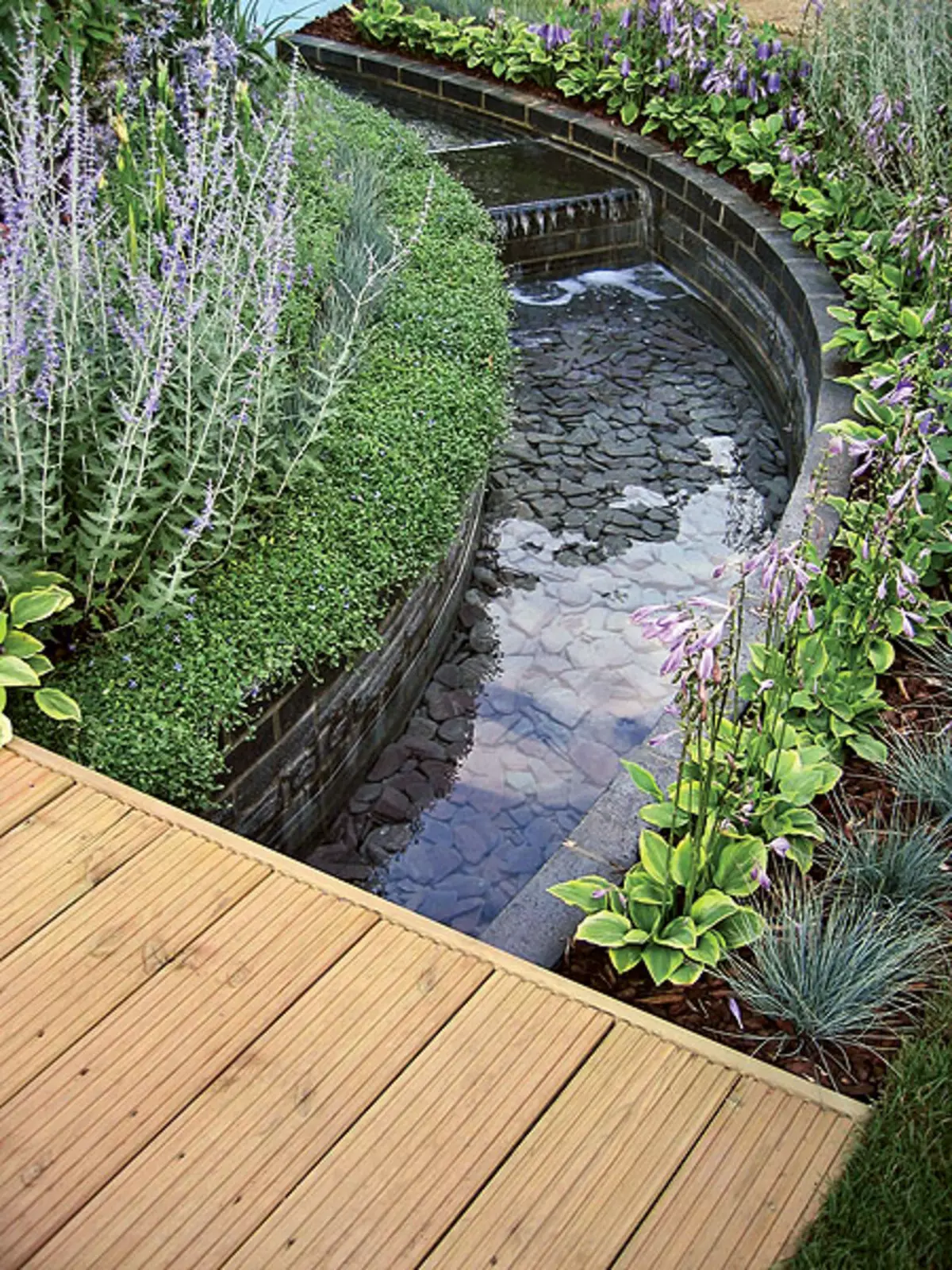
|
"Dressed" in the wood of the reservoirs is very beautiful. The edging of the pond can be both flooring, and a ribbon of stones, emphasizing the coastline. Washed after the rain wood becomes slippery, so the surface of the boards is recommended to make corrugated - avoid injuries. It is especially important for those flooring, which are intended for enough intensive operation: tracks, bridges. | ||
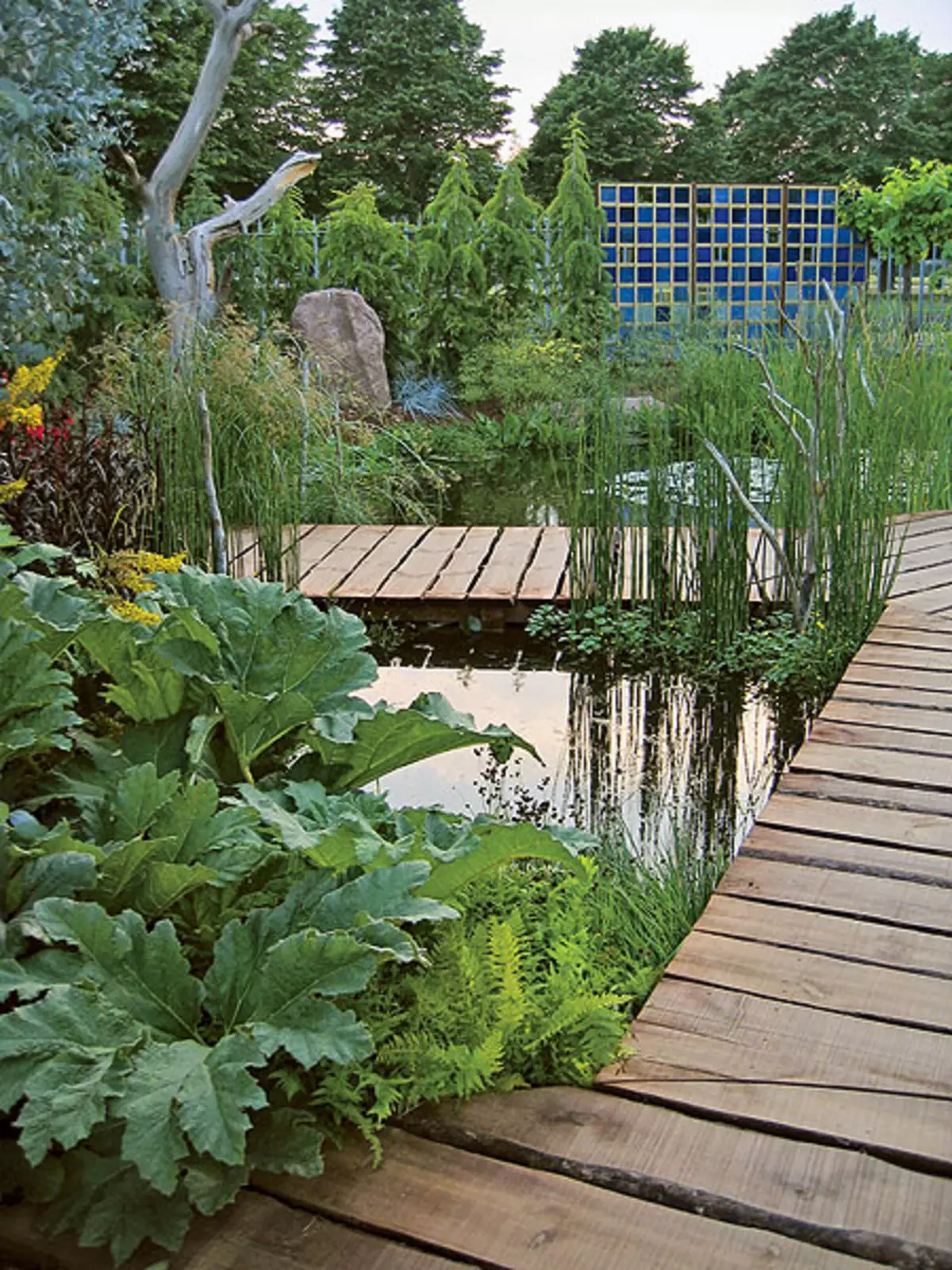
| 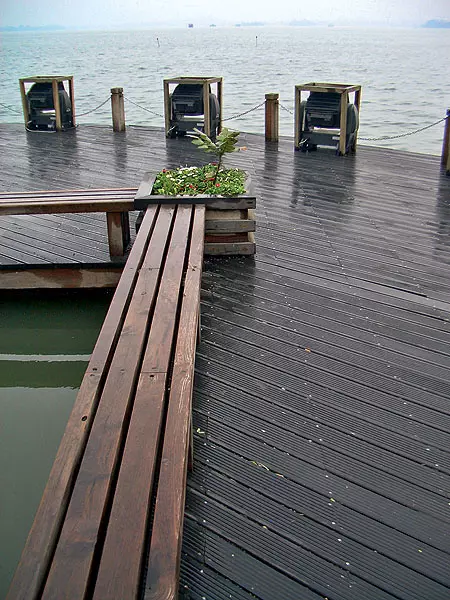
| 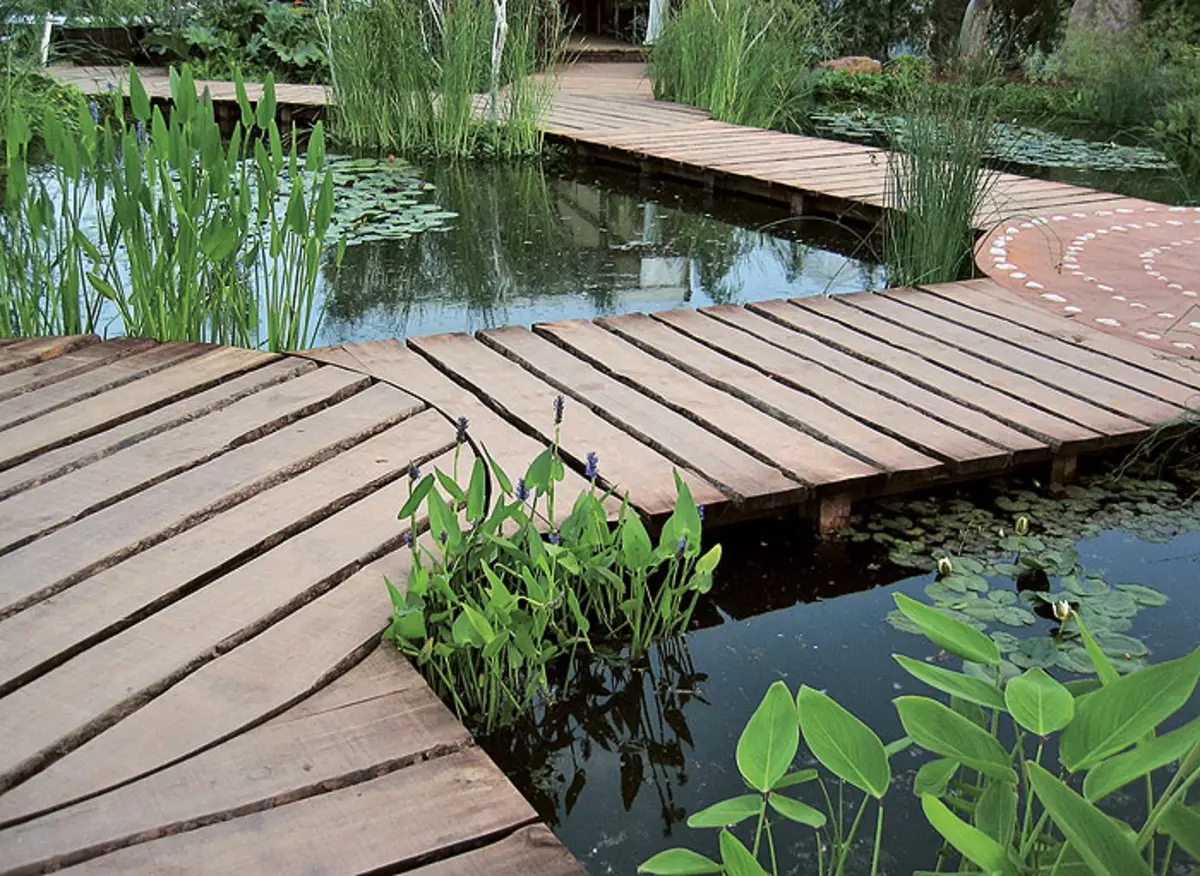
|
Strict geometric wooden surfaces in any landscape make a sense of order. |
More expensive larch, but more sophisticated various breeds of tropical trees. These are exotic Bangkirai, Garapa, Ipe, Itauba, Kumaru, Limbali, Merbau, Tiger Tree, TIK (price- 2500-6500rub. For 1m2). They have high resistance not only to atmospheric influences (rain, snow, fog), but also to different insects, fungi, mold, and besides, slowly aging. The fraction of a terrace board from tropical rocks is mainly supplied by European companies: OSMO (Germany), Timberline (Netherlands), Fortim Trading (Belgium), DLH Group, Horning (Obennia). In order for the wood for a long time retaining its natural color, it is treated with various protective and pigment compositions, without this, the board is not too attractive grayish color. Most often impregnated with oil, which also increases the wear resistance of wood. TEAK OIL (Brita), Natural Oil Finish (Varathane), and TEAK L, IROKO L, Bangkirai L (OSMO HOLZ UND COLOR, GERMANY) IDR.
Above the water
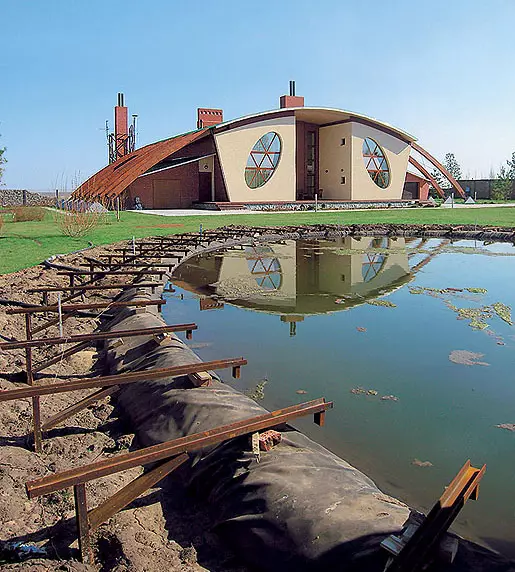
Designers V. Pashin, S.Shukhukov
Photo V.Nepledov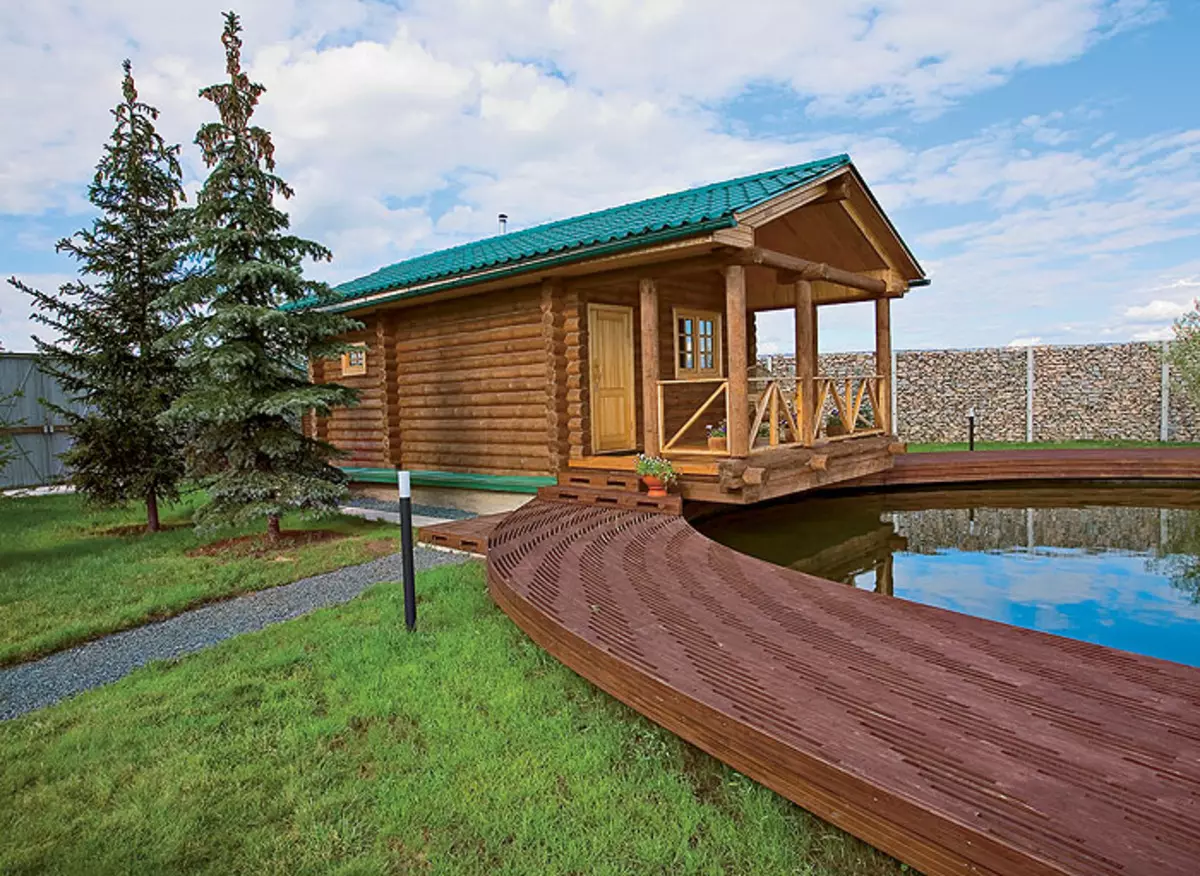
Photo by V.Nefedovatot The reservoir, located next to the house and closely adjacent to the ban standing opposite the house, is a kind of binder, which unites the differences in a single ensemble. The size of the reservoir - 1812m. Bentchable base for flooring, metal triangular consoles located in 1,2m (a) increments. Each is rigidly attached to the vertical metallic tower, deposited in concrete. The layer of 1.1 m wide was dialed from larch boards (section - 102.5 cm, length - 2m), laid on the edge of the rugger (b). When laying them, bending, bonding among themselves self-draws. The boards were toned by a mahogany color. The floor cloth towers over the water about 35cm, and above the land - by 15-20 cm. On the sides it was decorated with the same boards.
Relatively new and recently, increasingly demanded material - heat-treated wood. It is offered both Russian companies "West-Wood Rus", TMD and foreign-Barkett (Germany), Lunawood (Finland). It is wood treated with a gluable water ferry at very high temperatures (up to 220-240 ° C) without access of oxygen and the use of any chemical additives. As a result, it changes its structure at the molecular level. The physico-chemical properties of the rubber processing of wood are modified: first of all the moisture content is reduced, which means that resistance to rotting, the effects of bacteria, fungi and insects occurs. Heat treated wood does not swell at high humidity and even with immersion in water, its thermal insulation qualities are improved. The field of chemical reactions decomposes resin. The color changes on brown or dark brown. However, heat treatment has cons: after it, wood becomes more fragile. The most popular breeds that are subjected to heat treatment - pine, spruce, birch and aspen. Of these, it is used for the manufacture of structures located in the open air, more often used pine and fir. Cost - from 2 thousand rubles. For 1m2.
Garden parquetIn addition to the boards, the so-called garden parquet is now popular. These are tiles, usually square (the length of the side can be different - 300-500mm), scored from several wooden slats fixed on a plastic base-grid. Planks are located parallel to the edge of the tile or diagonally relative to it. So that the water is not accumulated on the wooden surface and flowed down, there are small gaps (1.5-8 mm) between the planks. With each other, tiles are connected with the help of latches placed around the entire perimeter of the plastic lattice. The basis may become any flat, concrete, asphalt, gravel, even primer. Such a parquet is made from exotic breeds - DLH Group (average cost - 3200-3400rub. For 1m2), Hortus, Italy (parquet from Ipe- 4700rub. For 1m2), OSMO; as well as from the Siberian larch, heat-treated wood. Release it not only Western companies, but also Russian-Faynwood, Real Wood. The company "Labyrinth" developed a system of a dialing parquet of wood-filled PVC. The lattice lattice is made of plastic (PND). Dimensions of the module - 300300mm, height, 25mm, cost - 169 rub. This manufacturer also offers parquet from heat-treated birch, larch, pine (cost module 300300mm- from 130 rubles).
Tricks assemblies

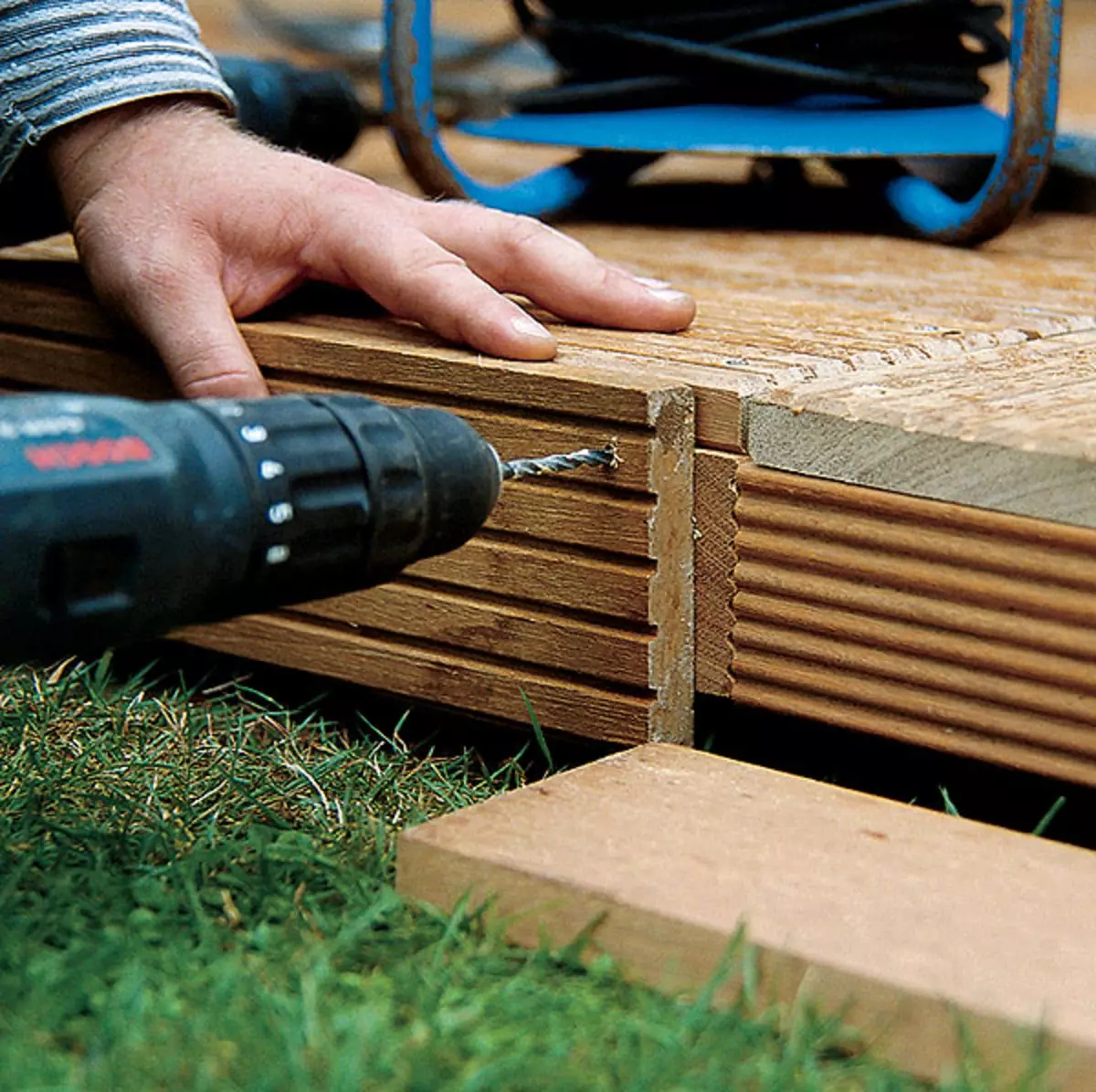
Caring for wooden surfaces is not too troublesome. Since even before laying the board is treated with special compositions, in the future it is only necessary to maintain them in good shape. The aruto means that in the spring after the snow, it is necessary to remove all the dirt that accumulated over the winter is to shift it with a broom or tick the rigid brush. Check regularly, whether there are no cracks on the flooring and breakdowns so that sins and burrs do not appear in these places, which can damage the barefoot. Where the protective impregnation was laid out, the surface is cleaned and applied this composition again. At the same time, once in 1-2 years, such a coating is recommended to update completely
Walking along the tracks

The editorial board thanks the company "West-Wood Rus", "Forestry", "Osmo-M", "Faynwood", as well as the Russian representative office of the company DLH - Bohmans for help in preparing the material.
